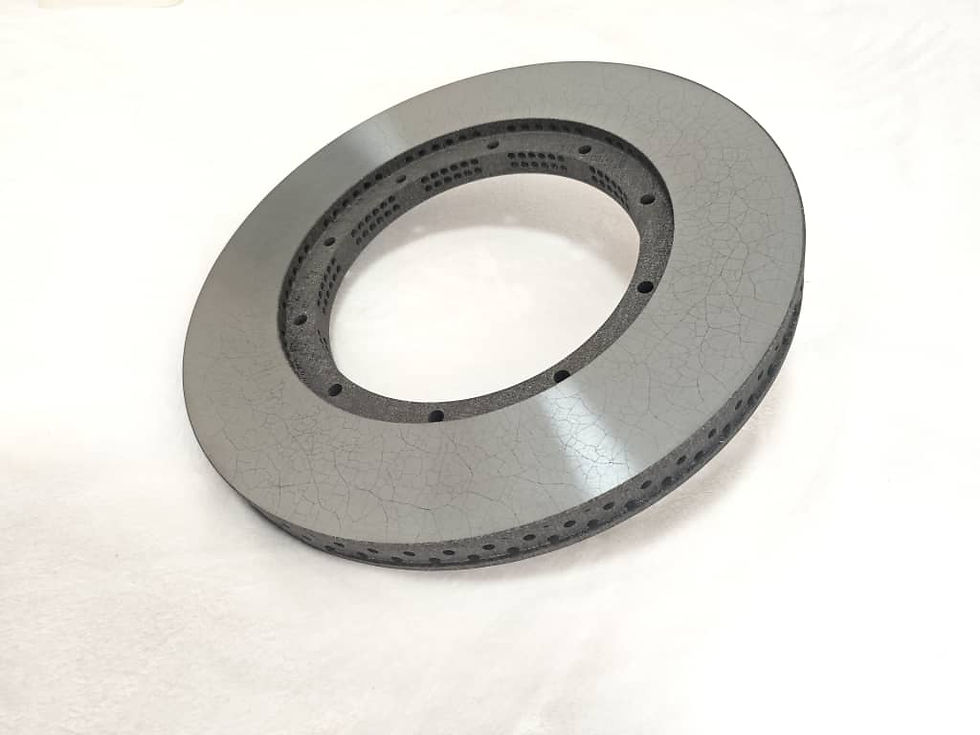"What You Need to Know About 2-Piece Floating Brake Discs"
- Triton Motorsports

- Dec 11, 2022
- 3 min read
Updated: Feb 19, 2024

Floating brake discs are gaining momentum among drivers who seek to maximize the efficiency of their braking systems. Characterized by their innovative two-piece design, these advanced brake discs stand out for their exceptional ability to dissipate heat. This enhanced cooling capability results in better overall performance compared to the conventional single-piece brake discs, especially under demanding driving conditions.
Another significant advantage of floating brake discs is their superior vibration dampening qualities. This feature is particularly beneficial for high-performance vehicles, as it contributes to a smoother and more controlled ride even at high speeds or during intense braking scenarios.
Moreover, the use of floating brake discs can lead to improved longevity of the braking system components due to reduced thermal stress. This can be an attractive benefit for drivers looking for both high performance and durability in their vehicle's braking system.
In summary, floating brake discs offer a compelling combination of improved cooling, enhanced performance, and superior vibration dampening. These advantages make them an ideal choice for enthusiasts and drivers of high-performance vehicles who demand the very best from their braking systems.
Understanding the Construction of Floating Brake Discs:
A floating brake disc (brake rotor) consists of two main parts: the inner surface, known as the hat, and the outer braking surface, referred to as the disc. What makes this design innovative is the method by which these two parts are joined.
Small metal pins or bolts serve as the connection between the hat and the disc. This unique structure allows for what is termed as floating – a feature where the outer disc can move independently from the inner hat. Such an arrangement is not merely for mechanical intrigue; it has practical benefits that significantly impact both performance and longevity.
This floating mechanism allows for better heat dissipation during intense braking activities, reducing the risk of warping and other forms of wear caused by thermal stress. As a result, drivers experience smoother and more predictable braking responses, enhancing overall safety during rides. Moreover, this design contributes to increased brake pad life expectancy. The even distribution of heat ensures that brake pads wear down more uniformly, delaying replacement times and offering economic advantages in maintenance over time.
Educationally speaking, understanding these dynamic interactions within the rotor's structure highlights how automotive engineering continually evolves to improve vehicle reliability and efficiency.
Advantages of Floating Brake Discs
Floating brake disc technology offers significant benefits that enhance the overall performance and longevity of braking systems. One of the key advantages is their superior cooling efficiency. Thanks to the increased airflow facilitated by the separation between the two pieces of the disc, they are able to maintain lower temperatures during operation. This reduction in heat accumulation directly contributes to their exceptional resistance to warping, even under extreme temperature conditions.
As a result of this enhanced thermal management, floating brake discs exhibit an improved braking response. The consistency in performance ensures reliable deceleration, providing drivers with a sense of security and control. Moreover, this technology minimizes wear on the friction surfaces, extending the life span of the brake discs significantly.
An added benefit is their maintenance-friendly design. Unlike traditional brake discs that require complete assembly replacement when worn out, floating brake discs allow for straightforward component replacement. This not only simplifies repairs but also presents a cost-effective solution over time.
In conclusion, floating brake disc technology stands out for its cooling efficiency, durability against warping, sustained braking performance, and ease of maintenance – attributes that collectively contribute to safer and more economical driving experiences.




Comments